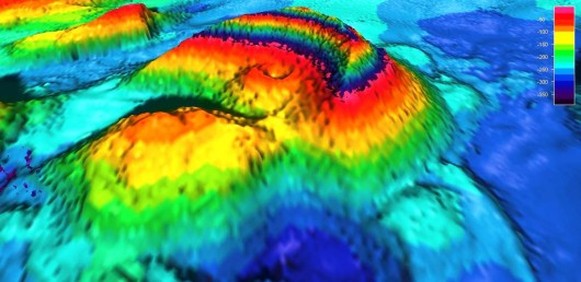Karl points out that when the newly discovered volcano erupted, sea levels also were lower than they are now, but even with that, “We still have too much depth. We have to call on glacial loading and rebound.” “When you get a thousand feet of ice sitting on the ground, it is very heavy,” she explains. “It actually depresses the earth’s crust. After the glacier melts back, the earth will rebound.” Like a trampoline, or waterbed, but at a much slower pace. “So at one time, in Misty Fiords, there was close to 4,000 foot of ice on that site, so the weight of that ice at least pushed down (created) as high as 400 feet of displacement,” Baichtal added. So, in summary, the volcano erupted within the last 13,000 years, after the ice retreated, as the land was slowly bouncing back, and when sea levels were lower.
They figured out most of this stuff just from examining the surveys. Volcanoes show up along faults in the earth’s crust, so when the fault moves enough to expose magma, that can lead to a volcanic eruption. Since faults don’t go away, volcanic eruptions in Southeast Alaska are possible in the future. “With the evidence that we have and the geologic age of the things that are there, there is no reason why it couldn’t,” he said. “I wouldn’t be surprised if it did.” But, Karl said people shouldn’t get anxious about it. “We have much better technology for detecting the initiation of one of these sorts of things now,” she said. “I don’t think people need to get too worried.”
The newly discovered volcano is very close to New Eddystone Rock, which is what’s left over from another volcano, which may have erupted around the same time frame. They are both near the entrance to Misty Fiords National Monument. -KRBD

 RSS Feed
RSS Feed